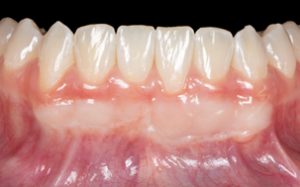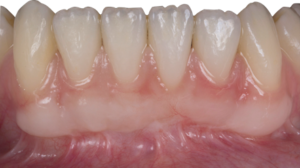You shouldn’t feel much (if any) pain right after because you will still be numb. As the local anesthesia wears off, the discomfort may start to creep in. So, if you can, get your prescriptions immediately following the procedure. That way, you can take your first dose of pain medication before the anesthesia completely goes.
Swelling tends to peak around day three before going down. You may notice some bleeding the first day through the morning after. But if anything beyond the level of pink saliva in the sink, that is not normal, and you should contact Dr. Shelby.
You will want to avoid brushing and flossing in the surgical areas for the first two weeks following the procedure. During this time you will be instructed to gently rinse with an antiseptic mouthwash (Chlorhexidine) to keep the area clear of bacteria.
The biggest issue, of course, is eating. In general, you’ll have to avoid eating anything on the affected side of your mouth for ~2-3 weeks. You’ll also be advised to avoid eating anything hard, foods that can break up into small pieces (nuts, chips, crackers, seeds, popcorn, etc), acidic, spicy, or anything potentially irritating to the surgical sites. The temperature of the of your food/drink will need to be cool for the first several days following the procedure, also accompanied by instructions to avoid hot substances such as hot soup or coffee.
Complications with a gum graft can occur and are usually accompanied by excessive bleeding from the palate, extreme pain, or fever. If you notice any of these issues, please contact Dr. Shelby immediately.
You will be seen for a 2-week post-operative visit to usually remove the sutures from both the grafting site and the roof of the mouth where the tissue was taken from. At this point, you will be allowed to start brushing in an upward motion away from the gum tissue with a post-operative ultrasoft toothbrush that will be provided to you. Pt will still refrain from flossing for an additional two weeks but return to normal hygiene habits at 4-weeks. Your gum tissue will continue to mature for the next 2-months before a procedure is considered a success.












